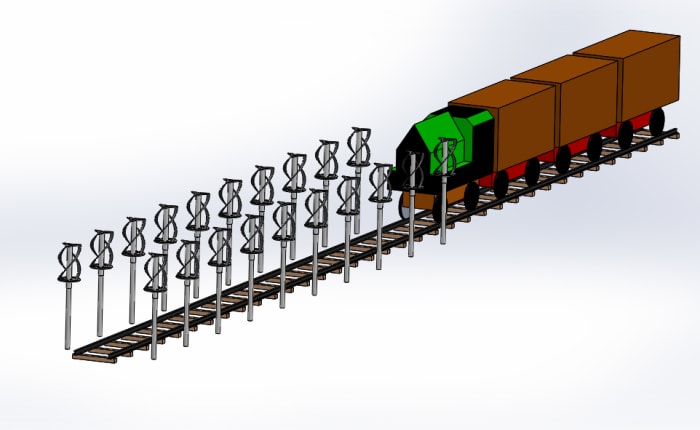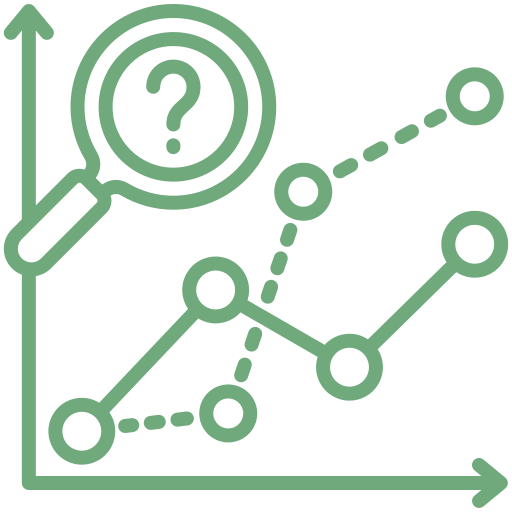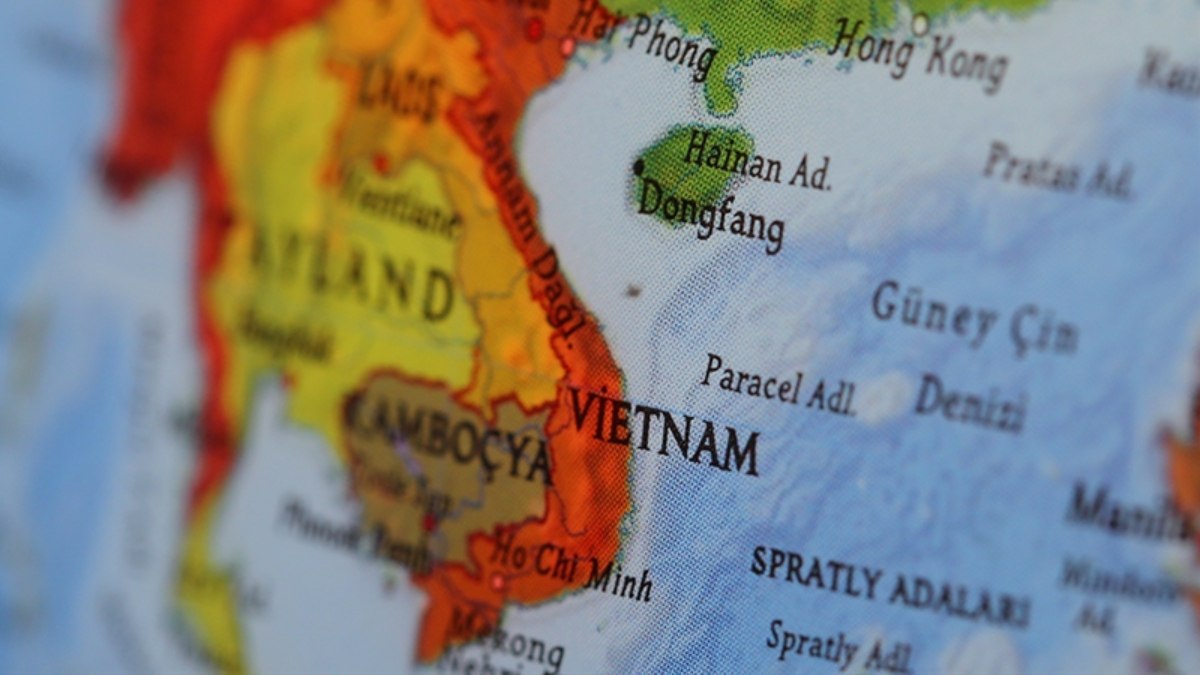Wind-Powered Trains: A Green Solution For Sustainable Transportation

Table of Contents
The Technology Behind Wind-Powered Trains
Harnessing the power of the wind to propel trains presents exciting possibilities for a greener railway industry. Several technological approaches are being explored:
-
Onboard Wind Turbines: This involves integrating wind turbines directly onto the train itself. These turbines would generate electricity during travel, supplementing or even replacing existing power sources. Challenges include the size and weight constraints of onboard turbines, as well as their efficiency at varying wind speeds. Furthermore, the aerodynamic drag introduced by large turbines needs careful consideration. Efficient energy storage solutions, such as advanced battery technology, are also crucial for managing fluctuating wind power generation.
-
Wind Farms Along Railway Lines: Another approach involves establishing wind farms strategically along railway lines. These wind farms would generate electricity, feeding into the railway's power grid to power electric trains. This method offers a more stable power supply compared to onboard turbines, but requires significant infrastructure investment and land acquisition. The integration of existing overhead power lines with the wind farm's energy output is a key technological hurdle.
-
Hybrid Systems: Combining wind power with existing energy sources, such as overhead lines or diesel generators, offers a pragmatic approach. Hybrid systems leverage the benefits of wind energy while mitigating its limitations. This allows for a gradual transition to wind-powered trains, reducing reliance on fossil fuels and improving overall energy efficiency. Developing sophisticated control systems that seamlessly integrate wind power with other energy sources is essential for the success of hybrid systems.
This diverse range of wind turbine technology, encompassing onshore and potentially offshore wind farms, offers diverse opportunities to integrate renewable energy sources into railway electrification. The challenge lies in optimizing each approach for maximum efficiency and minimizing costs.
Environmental Benefits of Wind-Powered Trains
Replacing fossil fuel-based train systems with wind-powered alternatives yields substantial environmental benefits:
-
Significant Greenhouse Gas Emission Reduction: Wind-powered trains drastically reduce a train's carbon footprint compared to diesel or even coal-powered electric trains. The precise reduction depends on factors like the train's energy consumption and the efficiency of the wind power generation system, but the potential is significant. Switching to wind-powered trains would greatly decrease the railway industry's contribution to climate change.
-
Improved Air Quality: By eliminating or drastically reducing the emission of pollutants from diesel engines, wind-powered trains contribute to cleaner air, especially in densely populated urban areas. This improves public health and reduces respiratory illnesses associated with air pollution. The reduction in harmful particulate matter and other pollutants offers significant public health benefits.
-
Contribution to a Cleaner Environment: Wind power is a truly clean energy source, emitting no greenhouse gases or harmful pollutants during operation. The transition to wind-powered trains aligns with global efforts to mitigate climate change and achieve environmental sustainability. This promotes a cleaner and healthier environment for present and future generations.
Wind-powered trains represent a crucial step towards green technology and sustainable transportation, minimizing environmental impact.
Economic Aspects of Wind-Powered Trains
While the initial investment in wind-powered train technology might seem substantial, the long-term economic benefits are compelling:
-
Initial Investment Costs: Setting up wind farms or integrating onboard turbines requires significant upfront investment. However, government incentives, subsidies, and economies of scale can mitigate these costs.
-
Long-Term Operational Costs and Savings: Wind power is a cost-effective energy source in the long run, as it eliminates the need for expensive fossil fuels. This reduces operational costs for railway companies and contributes to long-term cost-effectiveness. Reduced fuel costs translate to significant savings over the lifespan of the train.
-
Economic Benefits for Society: Investing in wind-powered train technology stimulates job creation in manufacturing, installation, and maintenance. The reduced reliance on imported fossil fuels enhances energy security and boosts local economies. The project creates jobs, both directly and indirectly, contributing to economic growth.
The economic viability of wind-powered trains becomes more appealing with government support, technological advancements, and the increasing cost of fossil fuels.
Challenges and Future Prospects of Wind-Powered Trains
Despite the potential, several challenges need to be addressed:
-
Technical Hurdles: Wind variability presents a challenge, requiring efficient energy storage solutions. Research and development are crucial to improve the reliability and efficiency of wind-powered train systems. Innovations in battery technology and smart grids are essential.
-
Government Policy and Investment: Supportive government policies and substantial investments are necessary to accelerate the adoption of this technology. Incentives, regulations, and infrastructure development play vital roles.
-
Future Innovations: Continued research and development will likely lead to more efficient wind turbines, improved energy storage systems, and smarter integration with existing railway infrastructure. Exploring alternative designs and materials will enhance performance and reduce costs.
The future of transportation depends heavily on embracing innovation and sustainable solutions. Wind-powered train technology presents both challenges and tremendous opportunities.
Conclusion
Wind-powered trains offer significant environmental sustainability through substantial greenhouse gas emission reductions and improved air quality. They also provide notable economic advantages with long-term cost savings and job creation. The potential for technological innovation in wind turbine technology, energy storage, and integration with existing railway infrastructure is immense. Investing in the future of sustainable transportation means embracing innovative solutions like wind-powered trains. Let's work together to make this green technology a reality, supporting further research, investment, and policy support for the development and implementation of wind-powered trains and other sustainable transport solutions.

Featured Posts
-
 Milwaukees Exclusive Rental Market Challenges And Opportunities For Renters
May 03, 2025
Milwaukees Exclusive Rental Market Challenges And Opportunities For Renters
May 03, 2025 -
 Canada Facing Ultra Low Economic Growth A Warning From David Dodge
May 03, 2025
Canada Facing Ultra Low Economic Growth A Warning From David Dodge
May 03, 2025 -
 Israil Meclisi Nde Gerginlik Esir Yakinlari Ile Guevenlik Goerevlileri Arasindaki Arbede
May 03, 2025
Israil Meclisi Nde Gerginlik Esir Yakinlari Ile Guevenlik Goerevlileri Arasindaki Arbede
May 03, 2025 -
 Fortnite Players Express Frustration Over Recent Shop Update
May 03, 2025
Fortnite Players Express Frustration Over Recent Shop Update
May 03, 2025 -
 Stronger Than Predicted Macaus Gaming Revenue Before Golden Week Holiday
May 03, 2025
Stronger Than Predicted Macaus Gaming Revenue Before Golden Week Holiday
May 03, 2025
